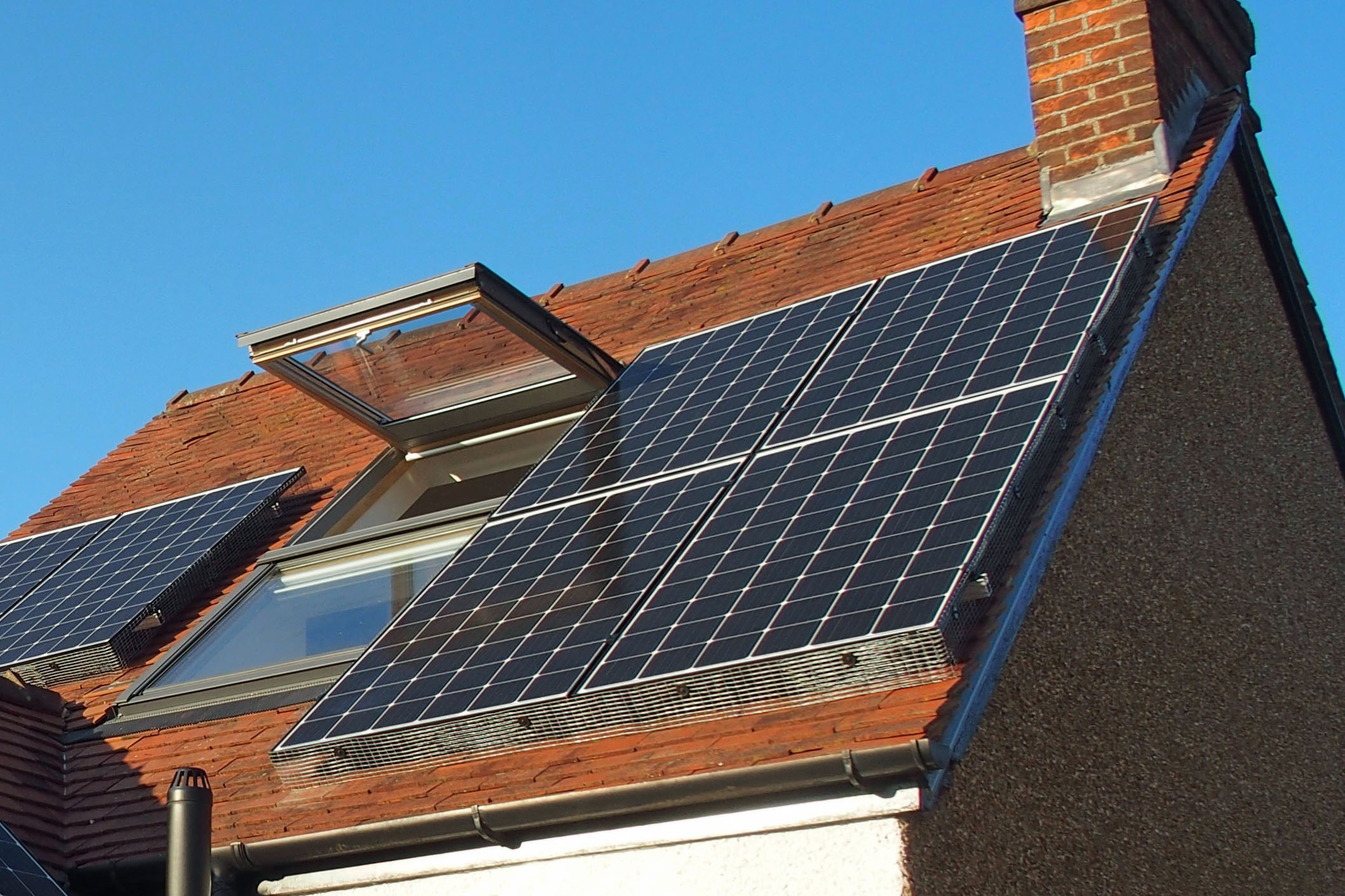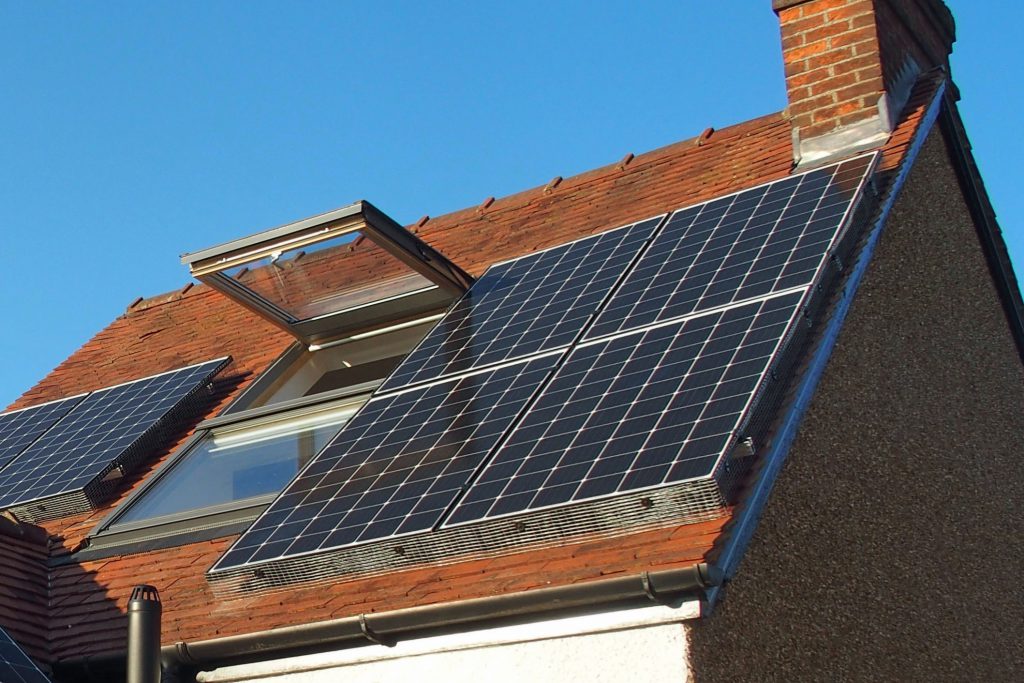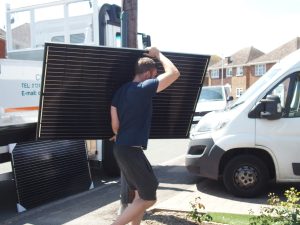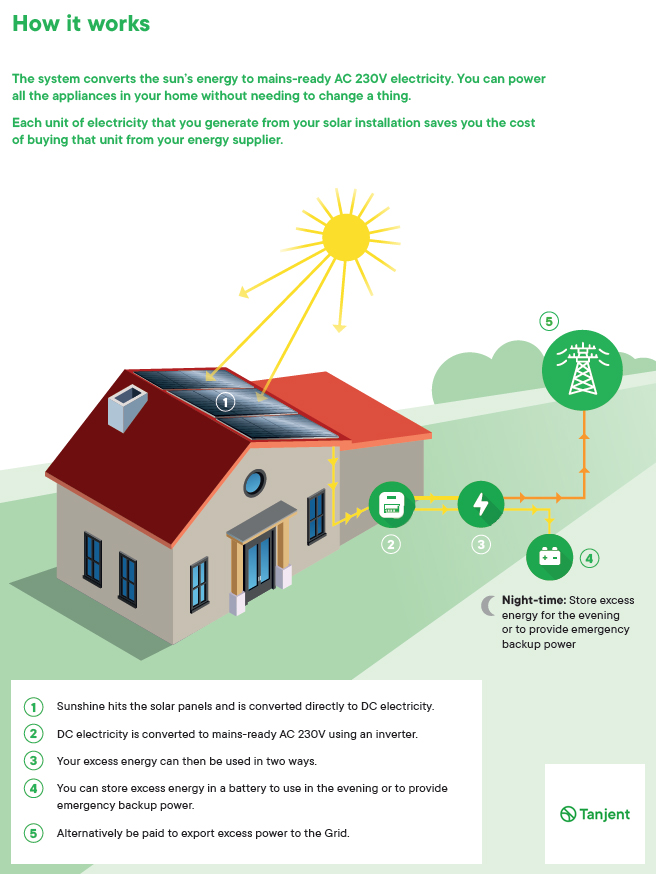Introduction
We install a lot of solar panels on homes in the UK (we are based in England, just north of London) and we get a lot of questions about solar panels. Here’s a quick guide that should be useful to anyone who wants to know about getting solar panels on the roof of their home. It will also cover the various bits of common jargon that you may come across along the way.
Solar Panels
A solar panel, in this context, is a device to convert sunshine into electricity. Technically we are talking about a panel consisting of small photo-voltaic (i.e. ‘light to voltage’) cells joined together into a size that’s useful to cover a roof. A typical solar PV panel is about 1m wide, a little under 2m tall, and weighs about 20kg (so it’s just about manageable by one person, so long as it’s not too windy!). Note that sometimes ‘solar panel’ can mean a solar thermal panel – i.e. one with water that passes through it to provide hot water to a home – but these are going out of favour in the UK so we won’t worry about the distinction here. Also note that you may come across other terms for solar PV panels, such as solar modules – they are the same thing.
So, straight away given the size of a panel, if you know roughly the size of your roof you can make a guess at how many panels you could fit on your house. Arrays of 10 to 16 panels are typical in the UK, but because of fixed costs it’s generally a case that ‘bigger is better’. We’ll dive into the details of this sizing process later on.
Solar Inverter
The electricity that comes out of a solar panel is DC (‘direct current’), that is ‘simple’ current like you get out of a battery. It has a positive wire and a negative wire and is straightforward to understand and connect up. The electricity we use in our homes is AC (‘alternating current’) which has been created by large generators spun in power stations by gas or nuclear, or by rotating wind turbines. The details don’t matter too much, but just note that AC polarity (positive and negative) is continually swapping backwards and forwards many times per second, a result of being created by spinning magnetic fields. We use AC because it can be made easily and can travel great distances more efficiently than DC. Our homes also run at a different voltage (electricity ‘pressure’) than solar panels. So clearly we need something to convert DC to AC to make it useful.
This where the second big component of a solar system comes in, a solar inverter that sits between the panels and our home consumer unit or distribution board (‘fusebox’ in the old days). It converts the DC from solar panels to AC for our homes. Often it’s fitted in the loft or attic, but can be fitted wherever is convenient (garages are popular). Cables take DC from the panels to the inverter (one positive and one negative). Another cable then takes the AC from the inverter to the consumer unit – this will have two live wires (line and neutral) and an earth wire for safety.
You can add a battery to this arrangement if you want, to store your solar for use later (for example if you’re out most of the day). This is usually done with a separate battery inverter (since as we saw above battery power is DC like solar panels so needs to be converted to AC to be used in the home); however you can buy inverters that combine the features of solar and battery inverters; these are known as hybrid inverters.
That’s the basics of solar covered, we’ll go into more details in future instalments of this series:
Solar Made Simple 2: What Can Solar Do For Me?
Solar Made Simple 3: Installing Solar Panels
It’s Time to Go Green!
If you would like to know more about Solar Panels and the PowerBanx range of home battery systems, and get a free instant quote, please complete our online form:







